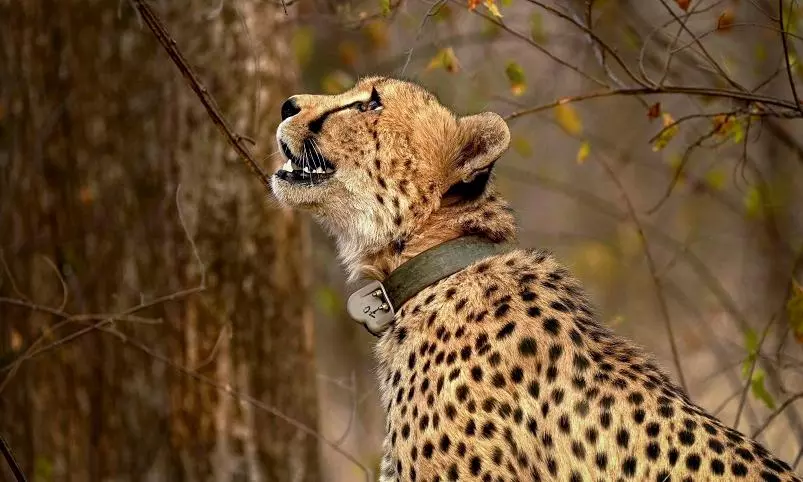
As India makes bold strides in Project Cheetah, the race for survival is still on
With govt planning to bring 30 more cheetahs from Africa by year-end and expand habitat beyond Kuno, only time will tell if the species will adapt to the new changes

Project Cheetah has just become bigger, bolder, and more ambitious. As India’s wildlife watchers and experts attempt to decode the latest news about 30 more cheetahs arriving here from Africa by December end, a few questions have arisen too.
Results will take time to manifest
Supporters of India’s Cheetah Reintroduction Programme are upbeat, not just about the arrival of more cheetahs, but also the government’s decision to expand habitats beyond Kuno National Park to Madhya Pradesh’s Gandhi Sagar and Nauradehi wildlife sanctuaries and Gujarat’s Banni Grasslands. On the other hand, those who have been dead against the cheetahs in India from day one, led by the recently deceased Valmik Thapar of Ranthambore fame, have taken it with a pinch of salt.
Only time will tell which of these camps was right. We are dealing here with the translocation of a prime species from one continent to another, and not the mere planting of a sapling. The end result of this mammoth move will hopefully manifest itself in decades, not years.
Even the much bigger Project Tiger, launched in 1972, faltered several times before it managed to pull back the tiger from the jaws of certain extinction. It took over 40 years to produce credible results.
Also read: PM Modi thanks Namibia for cheetah reintroduction
Bold moves: The Dheera experiment
In the latest move to broaden the scope and depth of Project Cheetah, eight to 10 cheetahs each are being brought to India from Kenya, Namibia, and Botswana.
Kuno in Madhya Pradesh was the take-off point for Project Cheetah, with Prime Minister Narendra Modi welcoming the new arrivals in September 2022. Fast forward to September 18, 2025, when one of the cheetahs from Kuno, named Dheera, was transferred to the second location: the sprawling Gandhi Sagar Wildlife Sanctuary in the Mandsaur district of Madhya Pradesh.
It was quite a carefully laid out move to move the lone cheetah to her new home. The official statement read: "The operation began at dawn in Kuno National Park, where the veterinary team, field staff, and senior officials of the forest department meticulously supervised every stage of the translocation. Dheera, calm yet alert inside her transport crate, undertook a seven-hour journey in a specially designed, air-conditioned vehicle, ensuring her comfort and health throughout the trip. At around 2:00 pm, the convoy arrived at Gandhi Sagar Sanctuary.”
Also read: Roaring question: Will cheetahs in India outrun their enemies?
Hopes pinned on Banni Grasslands
Now with two more places earmarked for cheetahs in India (Nauradehi in Madhya Pradesh and Banni), the project enters a crucial phase. Banni grassland will be of particular interest to wildlife experts and enthusiasts. Spread over 3,800 square kilometres in the Kutch district of Gujarat, Banni at one time was touted as the biggest grassland of Asia. Patches reflective of its wondrous past still remain intact.
But it lies wounded in several places. The advent of invasive species, ongoing construction activities, and even encroachments have taken a toll on Banni. Although it still holdsa wide variety of wildlife, including wild asses, blackbucks, chinkaras, desert foxes, and more than 300 species of birds.
On the face of it, Banni looks like an appropriate new home for the cheetahs. One hopes there will be efforts to improve the quality of the landscape for the benefit of new guests. This should also give a new lease of life to Banni.
Also read: Why free-ranging cheetahs alone can make India's relocation project a success
‘Kuno project on track despite setbacks’
Kuno has turned out to be a mixed bag for the cheetahs. Many have survived, thus endorsing the initial success of the project, while some have perished under unusual circumstances. Like the death of a sub-adult cheetah on September 16 this year. Identified as one of the cubs of Jwala, it was apparently killed by a leopard – the first such casualty of the cheetah in India.
But despite these setbacks, Kuno’s Field Director, Uttam Kumar Sharma, says, the project is stable. Kuno itself has an overall healthy population of 25 cheetahs, out of which 16 were born in India. “All are healthy and doing well,” he remarked.
Also read: 2 years of Project Cheetah: Successes, challenges, and the path forward
However, not all well-laid out plans proceed according to the script. Kuno, which received the utmost scientific, bureaucratic, and media attention even before the cheetah reintroduction plan kicked off, turned out to be a good breeding ground for the guests.
Will cheetahs warm up to new homes?
That may have led to naysayers and opponents of Project Cheetah sulking, but they still have something to look forward to in the near future. Gandhi Sagar, Nauradehi, and Banni in particular are the new testing grounds of the cheetahs. The progress in these areas will be closely watched.
Will the cheetahs survive in the three new homes? Nobody has a concrete answer.
Also read: Cheetahs are coming back to India: The inside story of the homecoming
Speaking from the point of view of cheetahs, they may not have taken to Kuno like the fish to water, but they have nevertheless shown remarkable resilience in an alien land. Like all other species of the cat family, they have turned out to be hardy survivors. Their battles for survival and adaptation to India will be keenly watched for many, many years.

